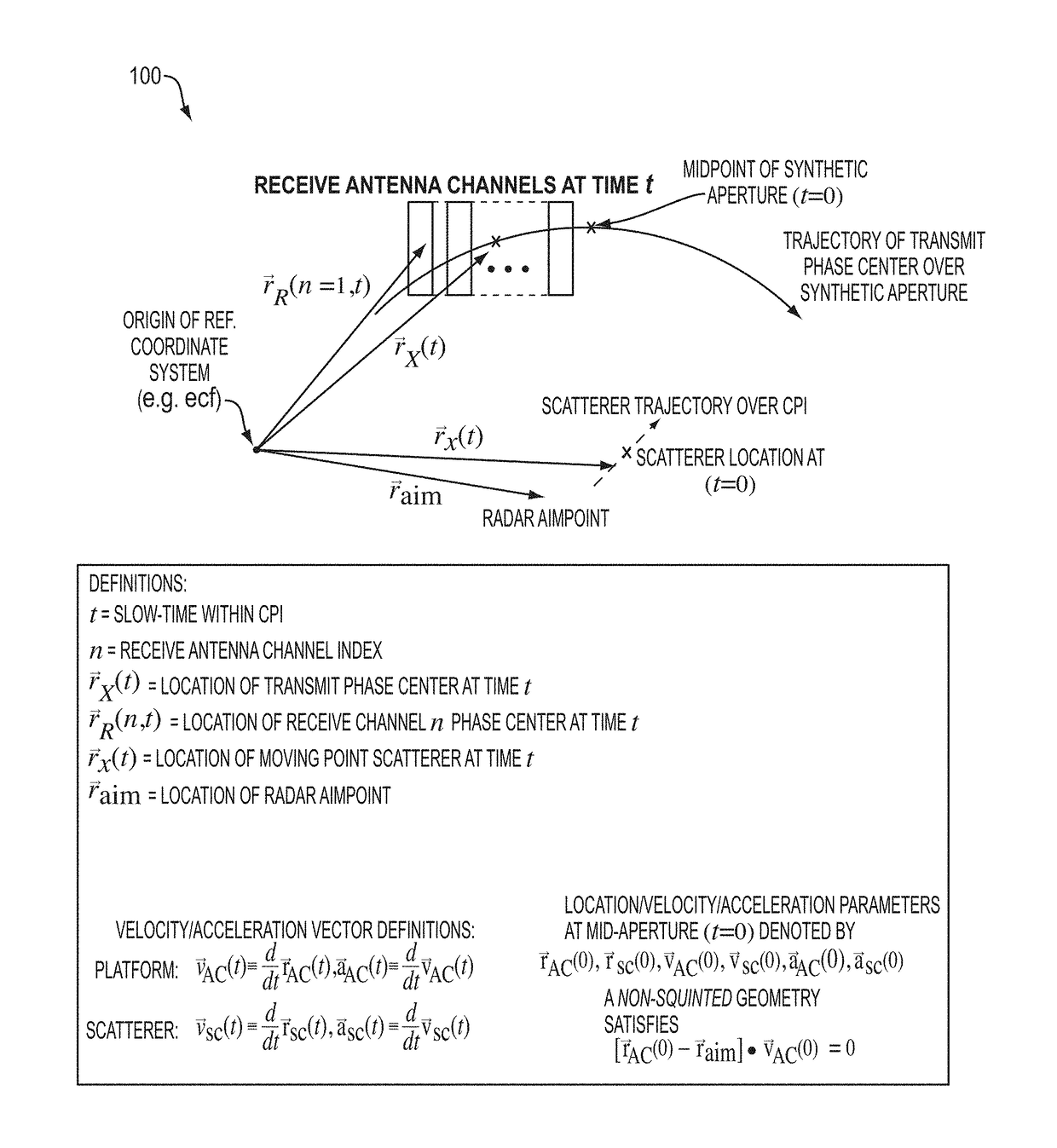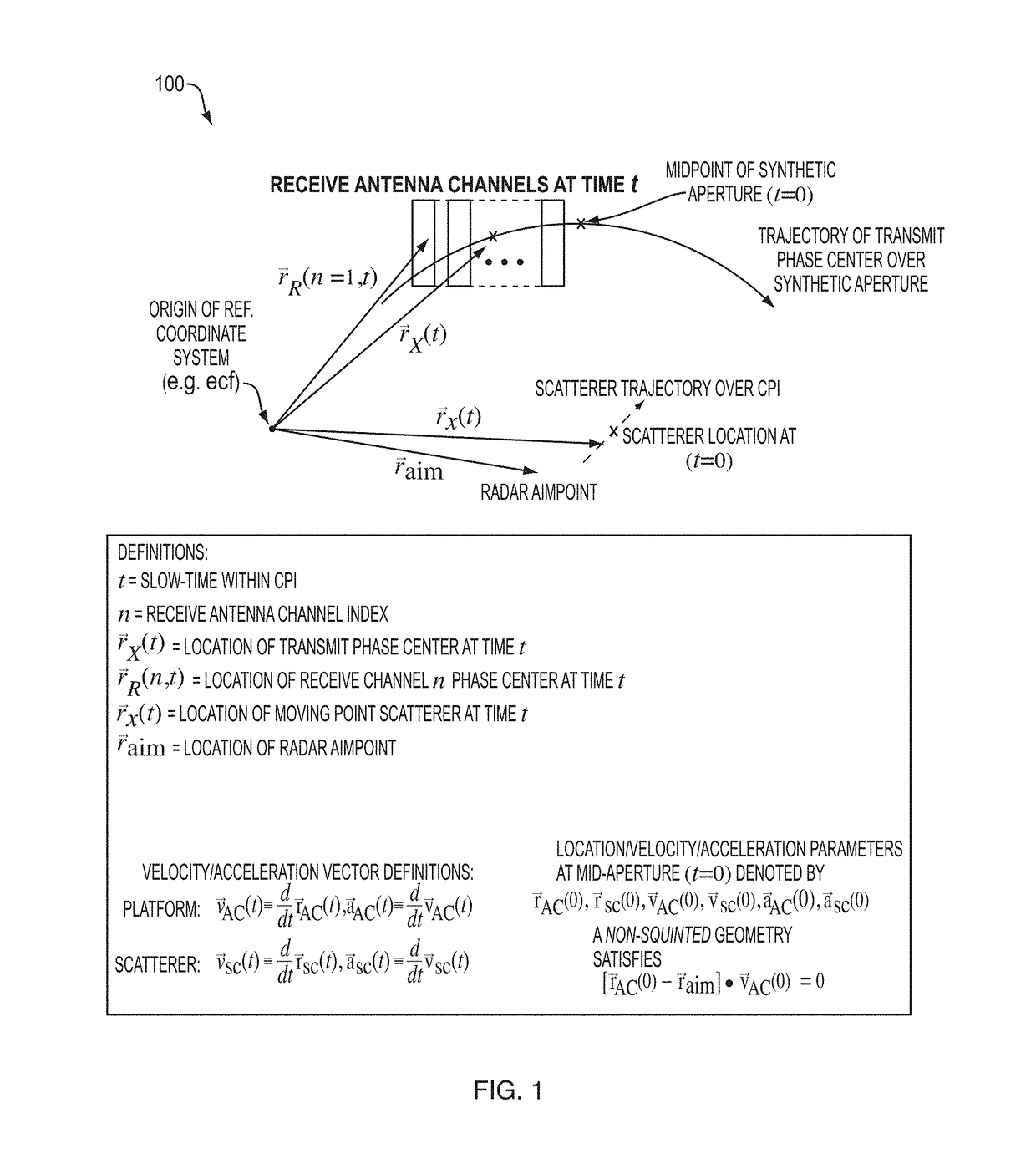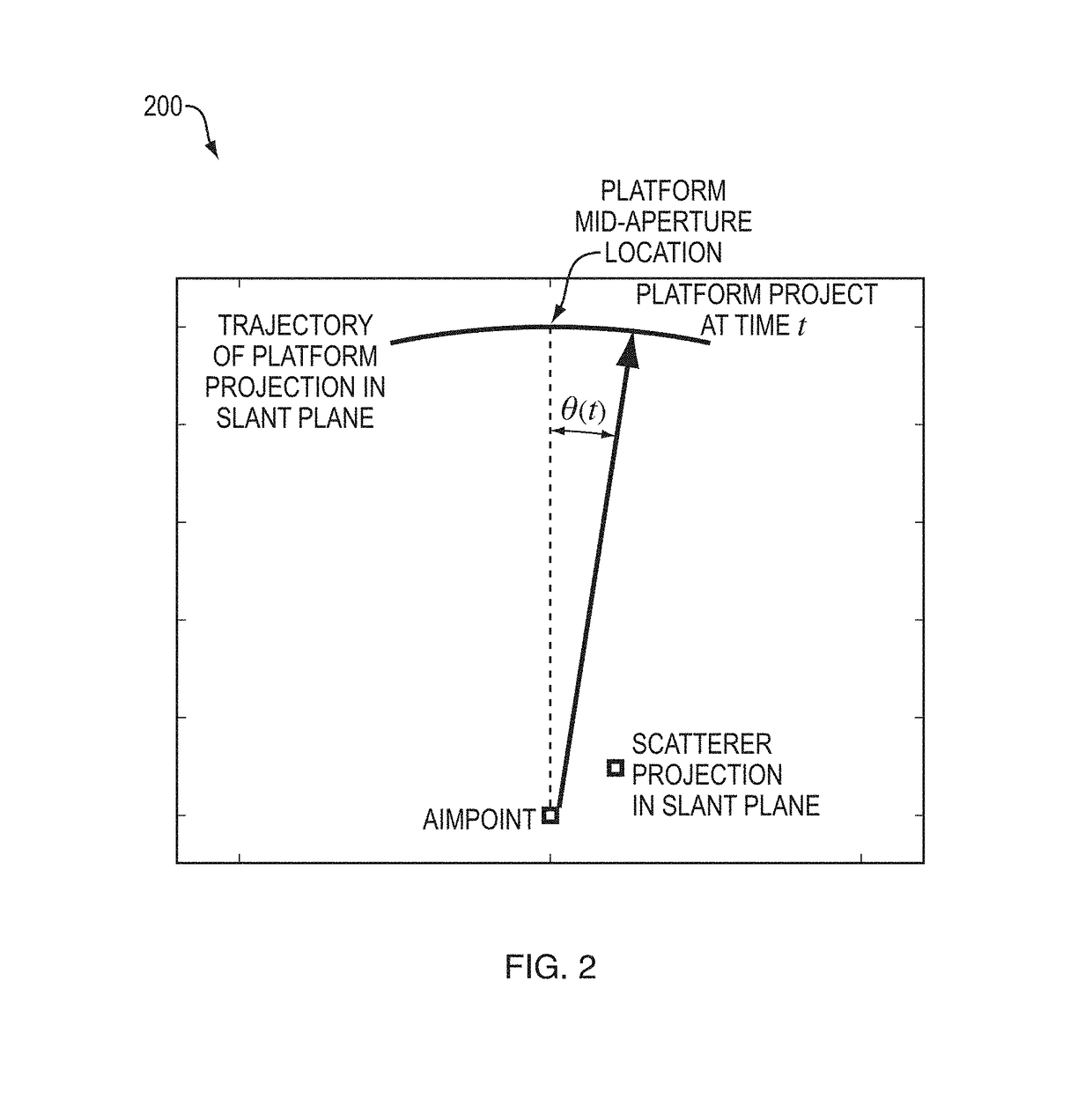Radar detection of endo-clutter high-value targets using tracker feedback
a tracker feedback and target technology, applied in the field of target detection, can solve the problems of low snr value, smearing and displacement of the target's energy signal, and trade-offs of mti-mode radars
- Summary
- Abstract
- Description
- Claims
- Application Information
AI Technical Summary
Benefits of technology
Problems solved by technology
Method used
Image
Examples
Embodiment Construction
[0037]The present invention is an “in-the-loop” method for detecting, geolocating, and tracking in main-beam clutter (i.e. endo-clutter, not noise-only exo-clutter) targets in multi-channel Synthetic Aperture Radar (SAR) data. The approach employs tracker feedback in the detection processing in order to maximize tracking performance on a single target, which is assumed to be identified at some initial time. To compensate for platform-induced range and Doppler dispersion, embodiments employ SAR pre-processing of motion-compensated phase history data for each antenna channel. The location of the processed SAR image chip on each coherent processing interval (CPI) is determined by converting track location and velocity into SAR image coordinates. The size of the small extracted sub-image (chip) is a function of the tracker error ellipse, allowing for smaller image chips when the target motion state is known accurately. Embodiments compensate for defocusing due to target motion using an ...
PUM
 Login to View More
Login to View More Abstract
Description
Claims
Application Information
 Login to View More
Login to View More - R&D
- Intellectual Property
- Life Sciences
- Materials
- Tech Scout
- Unparalleled Data Quality
- Higher Quality Content
- 60% Fewer Hallucinations
Browse by: Latest US Patents, China's latest patents, Technical Efficacy Thesaurus, Application Domain, Technology Topic, Popular Technical Reports.
© 2025 PatSnap. All rights reserved.Legal|Privacy policy|Modern Slavery Act Transparency Statement|Sitemap|About US| Contact US: help@patsnap.com



